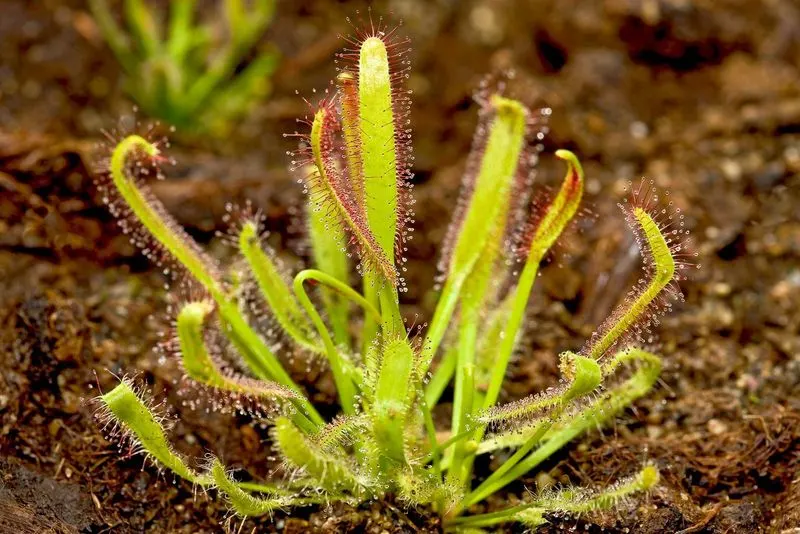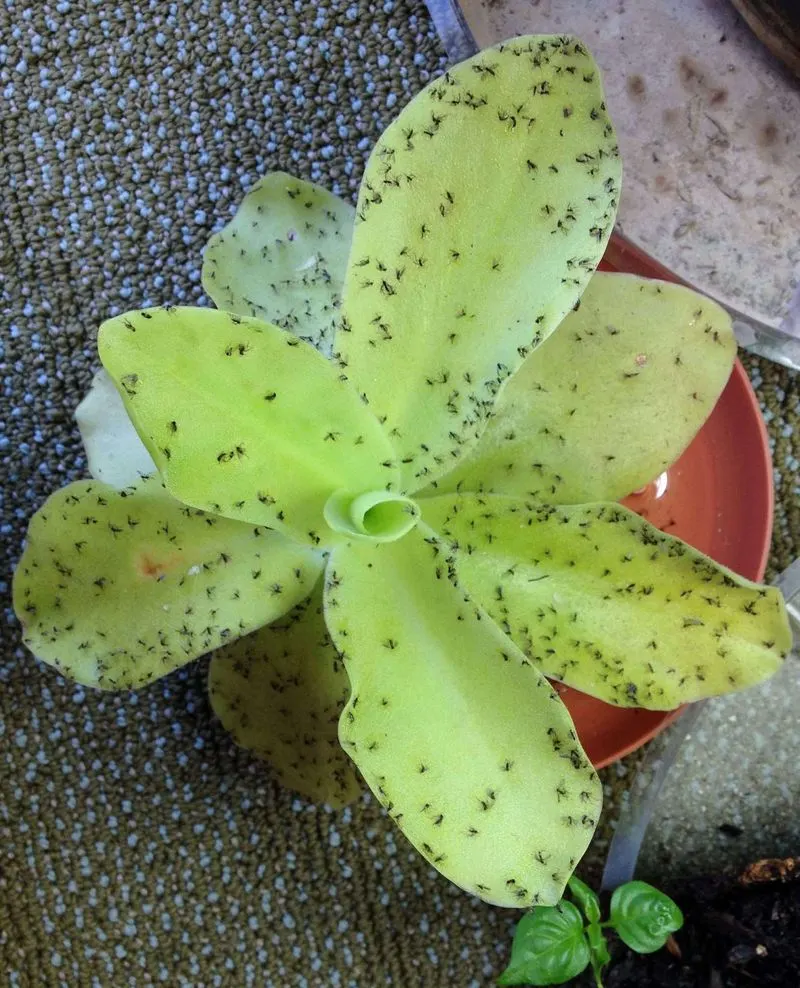Join us on an exhilarating journey as we uncover the thrilling world of ten extraordinary plants that possess a unique defense mechanism – they bite back!
From the mysterious Venus Flytrap to the aggressive Bladderwort, these fascinating plants have evolved over time to capture and consume their prey, showcasing nature’s incredible diversity and ingenuity.
Whether you’re a botany enthusiast or simply curious about these captivating creatures, this adventure promises to be both educational and entertaining.
1. Venus Flytrap

The Venus Flytrap is perhaps the most famous carnivorous plant, known for its jaw-like leaves that snap shut on unsuspecting insects. Found natively in North and South Carolina, this intriguing plant lures prey with its sweet nectar.
Once an insect touches the sensitive hairs inside the lobes, the trap closes in a fraction of a second. The plant then secretes digestive juices to break down the insect, absorbing essential nutrients.
This remarkable adaptation allows the Venus Flytrap to thrive in nutrient-poor soils, making it a fascinating subject of study. Its efficiency in capturing prey is unmatched in the plant kingdom.
2. Sundew

Sundews are captivating carnivorous plants adorned with glistening tentacles that seem to sparkle in the sunlight. These tentacles are covered in sticky mucilage, which is irresistible to passing insects.
Once an insect becomes ensnared, the Sundew slowly curls its tentacles around the prey, beginning a slow yet efficient digestion process. Found in various climates, they have adapted to consume a range of insects.
Their enchanting appearance and unique feeding mechanism make Sundews a favorite among plant enthusiasts. Watching these plants in action is a spectacle that highlights nature’s creativity.
3. Pitcher Plant

Pitcher Plants are nature’s pitfall traps, enticing insects with vibrant colors and sweet nectar. The rim of the pitcher is slippery, causing insects to tumble into the trap below.
Inside, a pool of rainwater mixed with digestive enzymes awaits, drowning the prey and breaking it down. Found in boggy and nutrient-poor environments, Pitcher Plants have evolved to make the most of their harsh surroundings.
Their intricate design and effective trapping mechanism make them one of the most studied carnivorous plants. Observing a Pitcher Plant in action is like watching a well-orchestrated natural performance.
4. Bladderwort

Bladderworts are unique aquatic carnivorous plants found in ponds and marshes worldwide. Their tiny, bladder-like traps are highly efficient at capturing small aquatic prey.
These bladders create a vacuum when triggered, sucking in water and prey in an instant. This quick action is one of the fastest movements in the plant kingdom.
Bladderworts provide crucial insights into plant adaptability and survival strategies. Despite their complexity, they maintain a delicate balance in aquatic ecosystems, serving as both predator and contributor to their environment’s biodiversity.
5. Butterwort

Butterworts are enchanting plants with flat, greasy leaves that act as a sticky trap for small insects. These carnivorous wonders are found primarily in North America and Europe.
The plant secretes a sticky substance that not only captures prey but also begins the digestive process. As insects struggle, they trigger more enzymes to be released, dissolving the soft parts of the prey.
Butterworts are exceptional at surviving in nutrient-poor habitats, showcasing nature’s ingenuity in adaptation. Their beautiful rosettes and unique feeding strategy make them an intriguing subject for both botanists and nature lovers.
6. Cobra Lily

The Cobra Lily is a mesmerizing carnivorous plant native to North America’s western regions. Its hooded, forked leaves resemble a cobra poised to strike, hence its name.
This plant lures insects into its tubular leaves with an enticing aroma, but once inside, escape is nearly impossible. Transparent windows within the leaves confuse prey, leading them further into the trap.
Cobra Lilies rely on symbiotic bacteria to digest their prey, a unique strategy among carnivorous plants. Their dramatic appearance and complex trapping mechanism make them a must-see for plant enthusiasts.
7. Monkey Cup

Monkey Cups are tropical pitcher plants known for their large, colorful pitchers that hang from vines. Found mainly in Southeast Asia, they are marvels of evolutionary ingenuity.
These plants trap insects in their liquid-filled pitchers, where they drown and are digested. The Monkey Cup’s design allows it to catch a variety of prey, from insects to small vertebrates.
Their ability to thrive in diverse environments makes them a fascinating study in plant evolution. The vibrant pitchers not only serve as traps but also add a splash of color to rainforests.
8. Waterwheel Plant

The Waterwheel Plant is a unique, aquatic carnivorous plant that captures small prey using wheel-like, whorled traps. Found floating in freshwater habitats, it operates much like the Venus Flytrap but underwater.
When prey triggers the trap, it snaps shut, capturing the unsuspecting victim. The plant then begins its digestion process, absorbing valuable nutrients.
Adapted to thrive in nutrient-deficient waters, the Waterwheel Plant offers insight into the diversity of carnivorous plants. Its rapid trapping mechanism and ability to survive in challenging environments make it a botanical wonder.
9. Nepenthes

Nepenthes, commonly known as tropical pitcher plants, are a diverse group of carnivorous plants with over 170 species. They are primarily found in the tropical regions of Southeast Asia.
These plants employ a passive trap, filling their pitchers with liquid to drown and digest insects. The unique shape and coloration attract a variety of prey, enhancing their survival in nutrient-poor soils.
Nepenthes are a testament to evolutionary adaptation and are prized among collectors for their exotic appearance. Their ability to thrive in harsh conditions highlights the incredible resilience of carnivorous plants.
10. Roridula

Roridula is a fascinating plant that captures insects with its sticky leaves but doesn’t digest them directly. Found in South Africa, it has a unique relationship with symbiotic insects that help in digestion.
These insects consume the trapped prey, and in turn, their waste provides nutrients to the Roridula. This mutualistic relationship is rare among carnivorous plants.
Roridula’s strategy showcases nature’s innovation in survival. Its sticky leaves glisten beautifully in sunlight, attracting both prey and curious onlookers. This plant’s complex interactions make it a subject of interest for ecologists and botanists alike.

